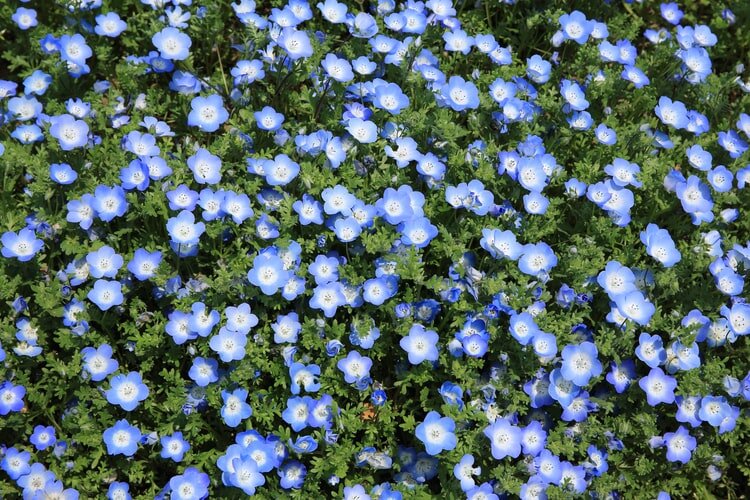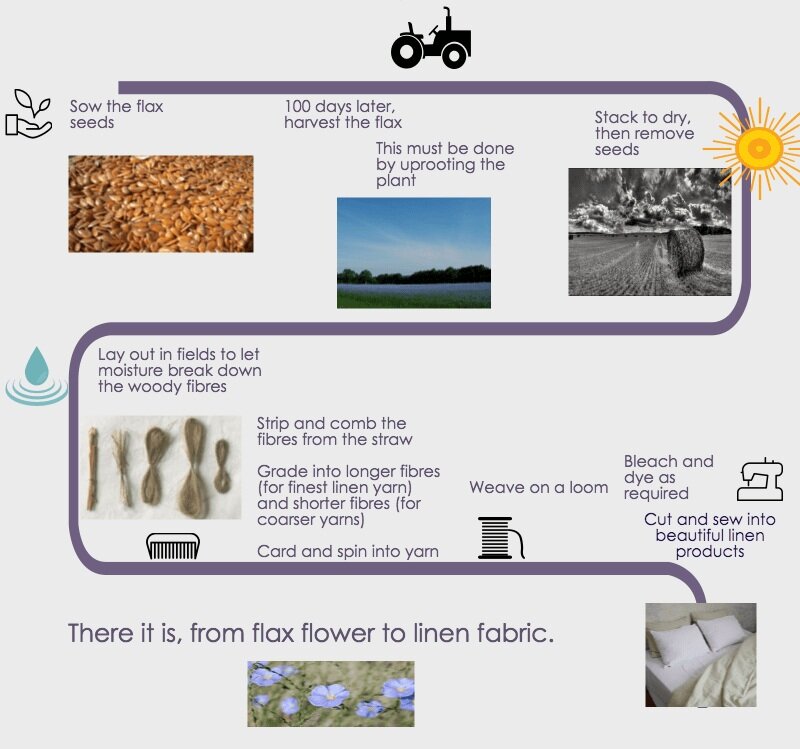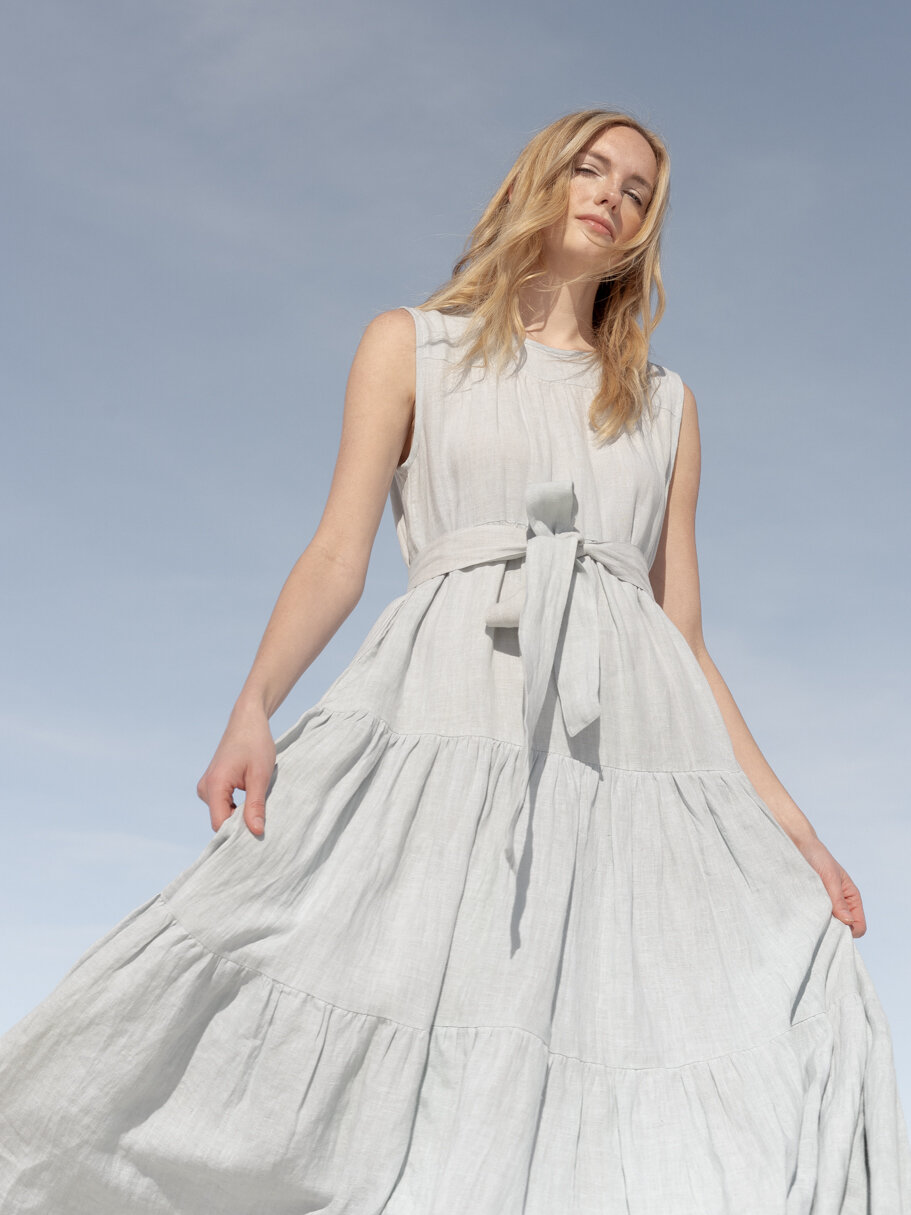What is Linen? & Why This Lovely Fiber is So Sustainable

image: NEU NOMADS
All About Linen & How it Is a Sustainable Fabric
I have always thought of linen as something used for my grandma’s table clothes or naturally wrinkled pants. However, it is so much more than that. Let’s dive into the world of the lovely fabric of linen and discover more.
A Little Background on Linen
Linen is the oldest known textile, with linen fibers being found in ancient caves in SouthEast Europe that are believed to date back to around 36,000 years! Mentions of linen were even found on tablets in ancient Greece. Find out more about the history of linen here. Linen has long been considered a luxurious fabric, and linen bedding was handed down in Europe through generations as a family heirloom. It was also traded as a commodity in Egypt and valued in Mesopotamia. Most production is done in Europe, accounting for 80% of worldwide production. I was really surprised to discover linen is more used in fashion than houseware. In addition to being used in clothing and housewares, linen use is growing in technical applications. It seems this versatile fabric is pretty special.

Flax Flowers
What Is Linen and How is it Made?
Linen is a fabric made from the flax plant; yes, the same plant that gives us flax seeds for nutrition. The short version of linen production is that the linen fibers are separated from the plant, combed for softness, then spun into yarn. Here is a little more detail for those of us that are textile geeks.
Fibers are cut from the plant or pulled by hand from the ground.
Seeds are removed, and then the fibers go through retting, which entirely removes the fibers from the plant.
Next, the fibers are separated, and the longest pieces are collected together.
The yarn is woven into long sheets of fabric.
Recent technologies in knitting operations have created ultra-fine yarns and more elastic fabric. The European Confederation of Linen and Hemp provides thorough information on the whole process on its site. It is an easy and interesting read – definitely worth a few minutes of your time.

Image: Linenme
What Is There to Love About Linen?
There are so many characteristics that make linen a versatile fabric. Amongst its best qualities are:
Strong and durable – 30% stronger than cotton
Absorbent – can absorb up to 20% of its weight in moisture
Breathable – the long wide fibers make linen very breathable
Keeps you cool yet can be insulating
Long lasting – due to its long fibers and strength, linen can hold up for many years
Gets softer with time, washing and wear
So What’s Not to Love?
No fabric is perfect, though, so what about linen is not so wonderful? The main complaint about linen is it wrinkles very easily. Ironically some of its best characteristics would make linen clothes a great choice for travel, but the wrinkling keeps it from being a favorite, especially amongst frequent travelers. Look for linen and organic cotton blends to reduce wrinkling and still have travel-worthy clothes. Linen can also tear or have permanent creases set if pulled and twisted too roughly too often. See the section on caring for linens to get the most life out of them.
Finally, due to the manual harvesting and production process, linen can be expensive. Linen only accounts for 1% of fabric production despite its great qualities due to cheaper, more wrinkle-resistant fabrics like cotton.

image: Laude Label
What Makes Linen Sustainable?
Flax harvesting and linen production are naturally very sustainable, so not much has to be done to lessen the impact of production on the planet or people. Flax grows easily, requires little pesticides, absorbs carbon, and uses less water than more popular fabrics like cotton. Flax is also used as a rotation crop, improving the quality of the soil, helping support the growth of other crops, and reducing soil erosion.
When the flax plant is harvested, it is used for many things like flaxseeds, flaxseed oil, and linseed oil. According to the European Confederation of Linen and Hemp, producing a linen shirt uses 6.4 liters of water compared to 2,700 liters for a cotton shirt. Therefore, growing and harvesting flax is really easy on the planet overall.
When selecting linen products, look for naturally occurring colors such as ivory, ecru, oatmeal, and taupe. White linens are bleached, and other colors are usually dyed with chemical dyes, which can cause soil and water pollution. If you can find naturally dyed fabrics, though, go for it. Retting using a chemical process can release harmful chemicals into the environment, and water retting can waste a lot of water. Try to find products that use dew retting, or reduce or recycle their water. More and more European flax is being sent to China for processing into linen. To help ensure the production is sustainable and ethical, look for organic linen, transparent information on growing and production processes, and for items made in Europe. Japan is also a growing producer of high-quality linen made sustainably and ethically. Flax harvesting is labor-intensive, so look for fair trade certification or transparency about labor practices.
The European Confederation of Linen and Hemp and the Council of Fashion Designers have even more information about the sustainability of linen if you want to dig in more.
Are There Certifications for Linen and Which Ones?
There are two certifications that can help you identify linens that are produced to a high quality and sustainably. Certifications are not required to feel pretty confident about linen being people and planet-friendly, and they do add even more transparency and confidence about what you are buying.
OEKO-TEX 100 Class 1 Certification
This means the finished product must adhere to 100 requirements related to quality and the use of non-toxic substances. The products must also be tested by 18 independent, accredited institutes in Europe and Japan.
European Flax® certification
This certification ensures traceability during every step of the production process. Certified producers commit to zero irrigation, no GMOs, zero waste, and no chemical use during fiber extraction. They are also operated by the standards of the International Labour Organization (ILO), ensuring high standards for labor rights and working conditions are met. The graphic below shows the rigor of the certification process. Currently, the certification is exclusively for the fabric produced in France, Belgium, and the Netherlands.

What about organic?
Some linen products are certified organic or GOTS organic, and unfortunately not many. In fact, less than 1% of European linen is certified organic. Flax is a crop that is rotated every 7 years. For the flax to be certified organic, all crops grown on the same land must be certified organic too. Since flax production naturally creates a small environmental footprint and is done with so few pesticides, it is not likely worth it for most growers to go through the additional time and expense of achieving organic certification.
What is Linen Used For?
Linen is used in household products such as sheet sets, table linens, curtains, bags, towels, upholstery, and more. Linen is so strongly associated with household materials; linen has become a generic term for describing things like towels, bedding, and tablecloths, no matter what material they are made from.
Linen’s use in fashion has grown a lot in the last few decades too. Nearly 70% of European’s linen is used in fashion. It is also often used to sew embroidery in garments since it is such a strong material. So, when looking for a new pair of shorts, a skirt, a summer blouse, or whatever, don’t forget to look for linen options. Linen blends are usually the most desirable due to the wrinkling I mentioned previously. Personally, I need new bed sheets, and finding linen ones is at the top of my list.
Linen also has many industrial uses, thanks to its strength. The most common industrial uses include insulation, filtration materials, reinforced plastics, sewing thread, surgical thread, and twine. And fun fact: linen makes up 25% of the American dollar.
Click Here to Shop Linen Clothing BrandsHow Do I Care for Linen?
Like any other fabric, one of the best ways to improve its sustainability is to care for it in a way that lengthens its life. Good news – you can machine wash and dry your linens! Here are some tips I discovered for how to best care for this lovely fabric:
Wash on low temperatures in warm or cold water in the gentle cycle with a mild detergent. High temperatures can shrink and weaken the fabric over time.
Do not bleach linen. Fabric softeners are not needed as linen naturally softens with washing, and the chemicals could reduce its natural absorbency and ability to wick away moisture. Besides, fabric softeners are not very environmentally friendly – I personally prefer using dryer balls to dryer sheets.
Dry at a low temperature, remove when damp, and then hang dry for softer, less wrinkly garments. This also reduces wear and tear.
You can try to iron linen and will get most wrinkles out, but it will take time. Embrace the creases and wrinkles – it is part of linen’s appeal. If you do prefer the smooth look, iron at a medium-hot temperature while still damp and use a little steam when needed.
You don’t need to do anything special with linen when storing it. Do avoid plastic bags and cardboard boxes, though – you don’t want your fabrics to get musty or dusty.
How Will You Add Linen to Your Life?
Now that you know more about linen, will you be using it? What products do you most want to find with linen or a linen blend? Hubby and I decided we needed a new sheet set for our anniversary, and after doing my research, I chose a linen set that is just what we need. I will love the softness; he will love the cooling properties. If you are searching for linen clothes, check out this post. No matter what you choose, if you purchase a product with linen, you are sure to love it (just embrace the wrinkles – it makes life easier).
About the Contributor: Mindy Redburn-Smoak has enjoyed a 20+ year career in corporate learning as a consultant, designer, and manager. She is passionate about sustainable living, family, travel, and dog rescue. She has been on a mission to live more sustainably for several years, and loves the journey of learning and trying new things in this space. She is on another journey pursuing her dream of writing about things she is passionate about and that can make a difference in the world. The best way to connect with Mindy is via email at mredsmoak@gmail.com.

PIN THE PHOTO TO SAVE THIS POST FOR LATER
We are constantly updating blog posts to give you the best in sustainable fashion, beauty and lifestyle.
LOOKING FOR SUSTAINABLE BRANDS?
Our Brand Directory is home to hundreds of sustainable brands, from makeup to cleaning supplies, from underwear to shoes. We have broken everything down by category for easy shopping, along with discount codes unique to SC viewers.
Shop Our Sustainable Brand DirectoryRelated Reading You May Also Enjoy:
#Content-Attribution#
Content Creator: Mindy Redburn-Smoak
Date:
